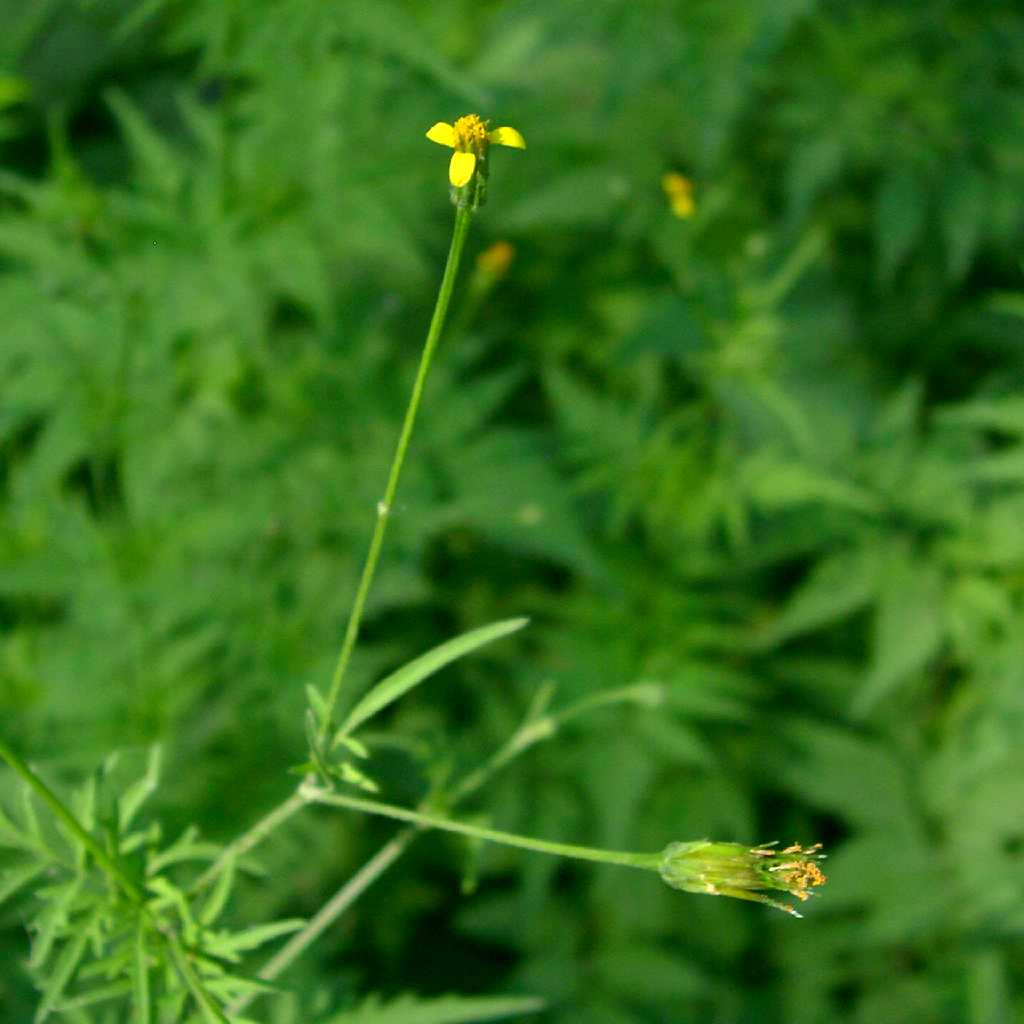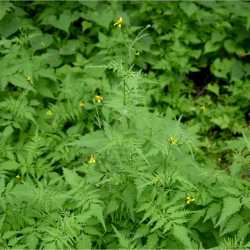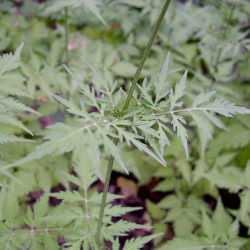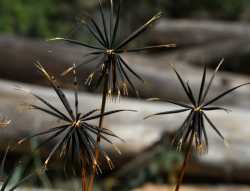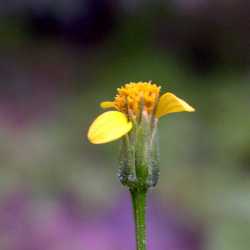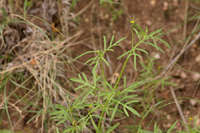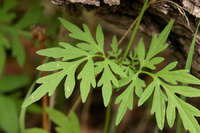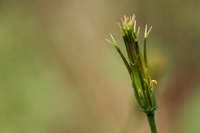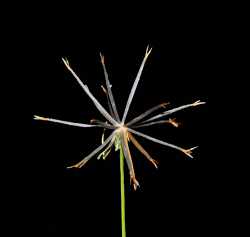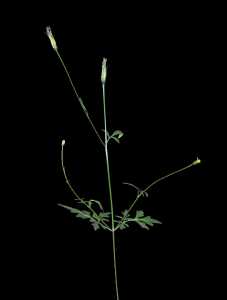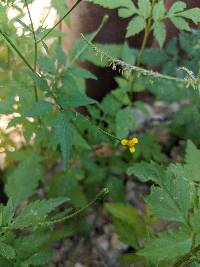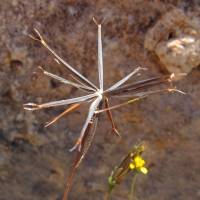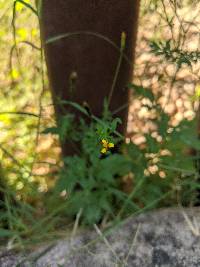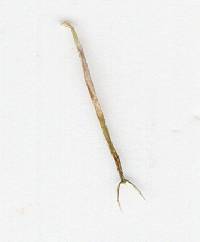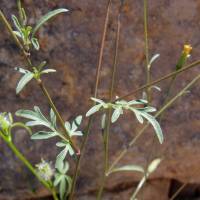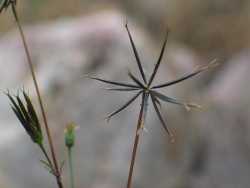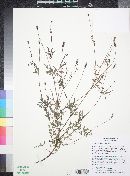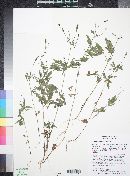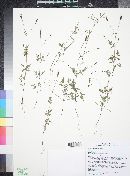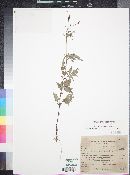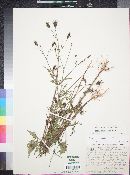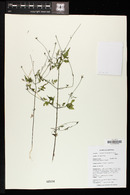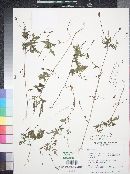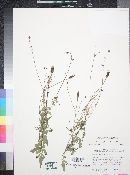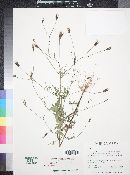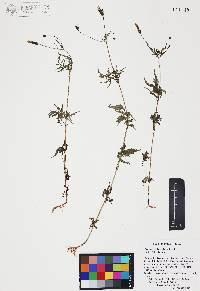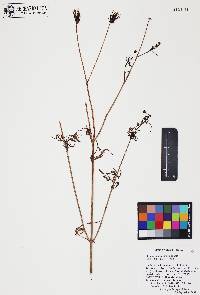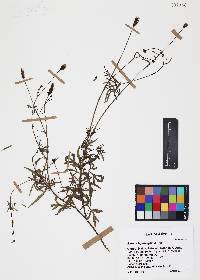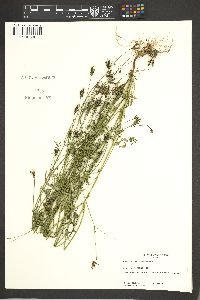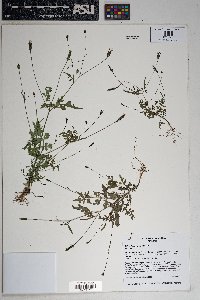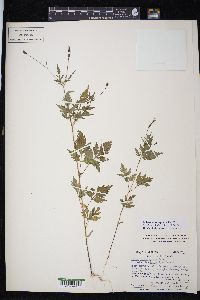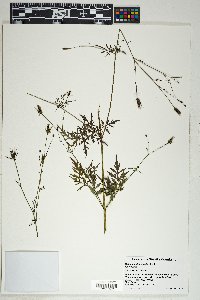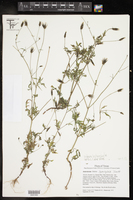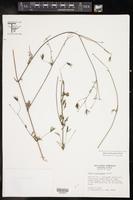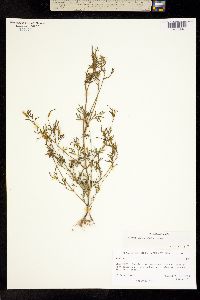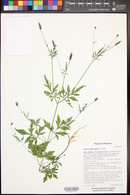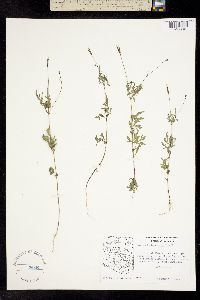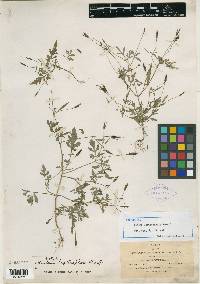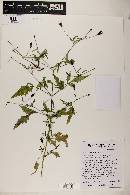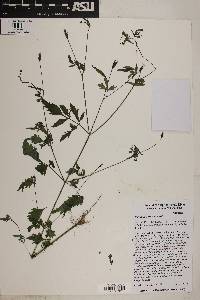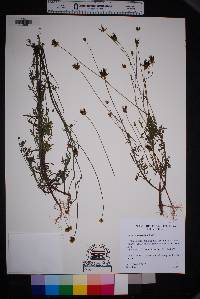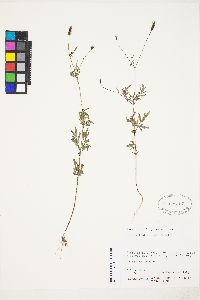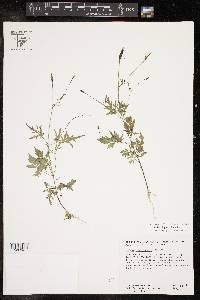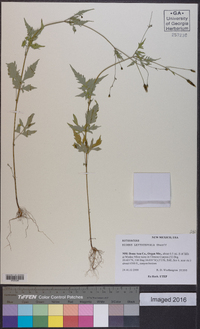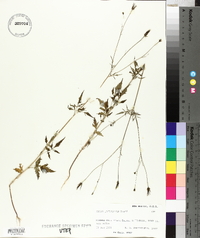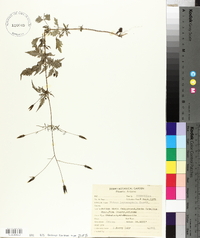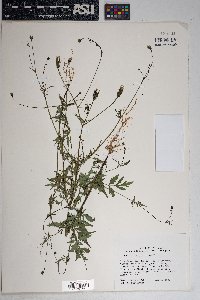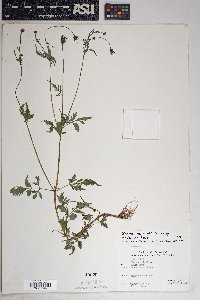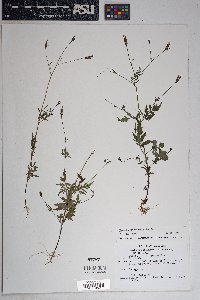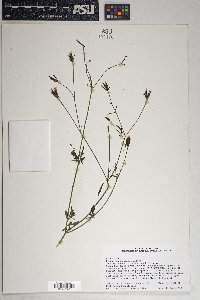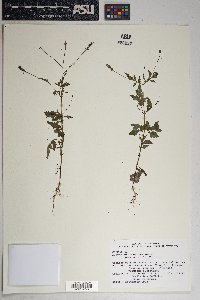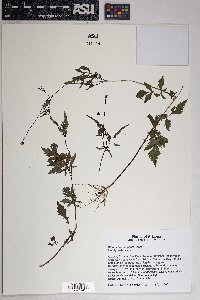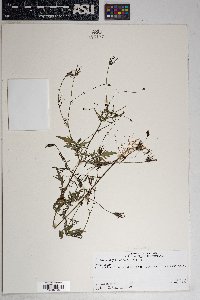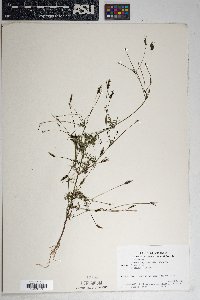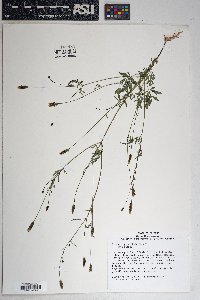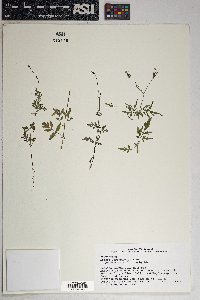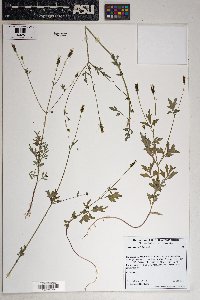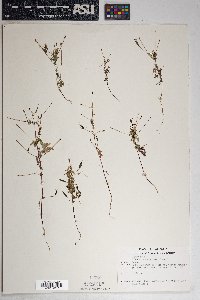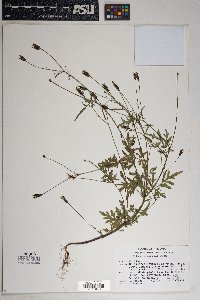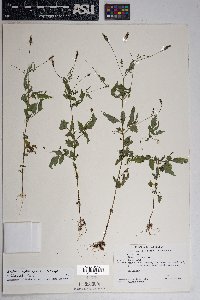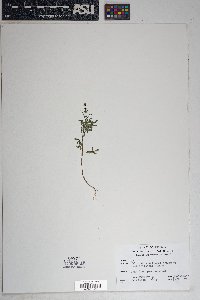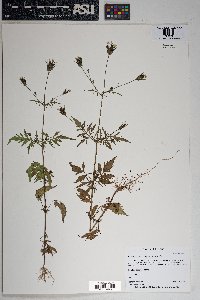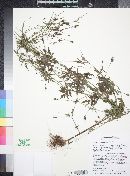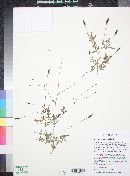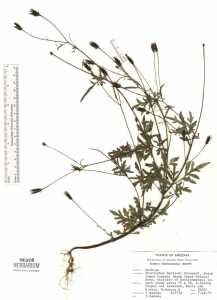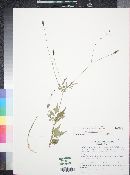Bidens leptocephala
|
|
|
|
Family: Asteraceae
Few-Flower Beggarticks, more...fewflower beggarticks, tickseed (es: saitilla)
[Bidens leptocephala var. hammerlyae, moreBidens leptocephala var. leptocephala , Bidens leptocephala var. ulinei] |
Annuals, 10-25(-50) cm. Leaves: petioles 5-40 mm (usually hispido-ciliate); blades rounded-deltate overall, 15-50+ × 12-40+ mm, 1-2-pinnatisect, ultimate lobes ovate or lanceolate to linear, 3-25+ × (1-)2-3(-15) mm, bases ± cuneate, ultimate margins entire, ciliolate, apices acute to attenuate, faces glabrous or hirtellous. Heads usually borne singly, sometimes in open, ± corymbiform arrays. Peduncles (10-)30-80+ mm. Calyculi of 3-4(-6) ± appressed, subulate to filiform bractlets 1-3 mm, margins ciliolate, abaxial faces usually glabrous. Involucres ± cylindric, 2-3(-4+) × 1.5-2+ mm. Phyllaries 4-5(-7), oblong to lanceolate, (2-)3-4+ mm. Ray florets 0 or 2-3; laminae yellowish or whitish, 1-3 mm. Disc florets 5-13; corollas yellowish to whitish, 1.5-2 mm. Cypselae: outer red-brown, flat or unequally 4-angled, linear, 6-8 mm, margins not ciliate, apices somewhat attenuate, faces obscurely 2-grooved, antrorsely hispidulous toward tips; inner similar, blackish (sometimes with pale tips), ± equally 4-angled, linear-fusiform, 9-14 mm, margins not ciliate, apices attenuate, faces 2-grooved, antrorsely hispidulous (at least distally); pappi of 2(-3), erect, retrorsely barbed awns 1-3 mm. Flowering Sep. Along streams; 900-1800 m; Ariz., N.Mex., Tex.; Mexico (Baja California, Chihuahua). FNA 2006, Wiggins 1964, Kearney and Peebles 1969, McDougall 1973 Duration: Annual Nativity: Native Lifeform: Forb/Herb General: Annual herb, 10-50 cm tall; stems moderately branched, slender, striate, quadrangular in cross section. Leaves: Opposite and petiolate, the petioles to 4 cm long, ciliate-hispid, connate at base; blades 2-10 cm long by 1-6 cm wide, once or twice pinnately divided into linear or ovate segments, the surfaces hispid to glabrate, with hispid-ciliate margins and veins. Flowers: Flower heads yellow, radiate or discoid, solitary or arranged in open, flat-topped panicles, on slender peduncles 2-8 cm long; calyculi (extra set of bracts just below the involucre) of 3-6 linear bractlets, 1-3 mm long, with ciliate margins; involucre (ring of bracts surrounding the flower head) cylindric, 3 mm high and half as wide, the bracts (phyllaries) lanceolate; ray flowers absent or 2-3, the corolla laminae (ray petals), when present, 2.5 mm long, pale yellow to nearly white; disc flowers 5-13, the corollas yellowish to whitish, 2 mm. Fruits: Achenes 5-13, linear, hispidulous above, glabrous below, each bearing 2 retrorsely barbed awns 1-3 mm long. Ecology: Found in moist soil, usually in shaded, sandy soil, from 3,000-6,000 ft (914-1829 m); flowers August-October. Distribution: AZ, NM, w TEX; south to c MEX. Notes: Bidens is a genus of herbaceous plants with opposite leaves, discoid or radiate flower heads with yellow-orange flowers, and seeds (achenes) with 2-4 barbed awns. B. leptocephala is distinguished as a diffusely-branched erect annual with leaves twice pinnately divided into linear to rounded-linear segments, these 2-10 mm wide; narrow, cylindric flower heads with only a few to no pale yellow rays; and 4-angled fruits with short hairs and two retrorsely-barbed awns. It is quite similar to B. lemmonii; however that species is relatively rare and restricted to s AZ and neighboring NM; is generally smaller (15-25 cm tall); has flower heads that are sessile or on short peduncles 1-2 cm long; and longer outer bracteoles (calyculi) surrounding the flower head, 3-20 mm long. Also similar to B. bigelovii but that species often has a single white ray per flower head, and the heads are wider than this species with 13-25 flowers. B. leptocephala can form abundant stands where soils are moist and the seeds will attach their little retrorsely barbed awns to your socks, your backpack, and your dog in the autumn. Ethnobotany: Unknown for this species, others in genus have many uses. Etymology: Bidens is derived from the Latin bis, twice and dens, tooth, hence meaning 2-toothed; leptocephala is from the Greek lepto (slender, thin) and Greek kephale/ Latin cephala (head). Synonyms: None Editor: SBuckley 2010, FSCoburn 2014, AHazelton 2015 |
|
|
|

